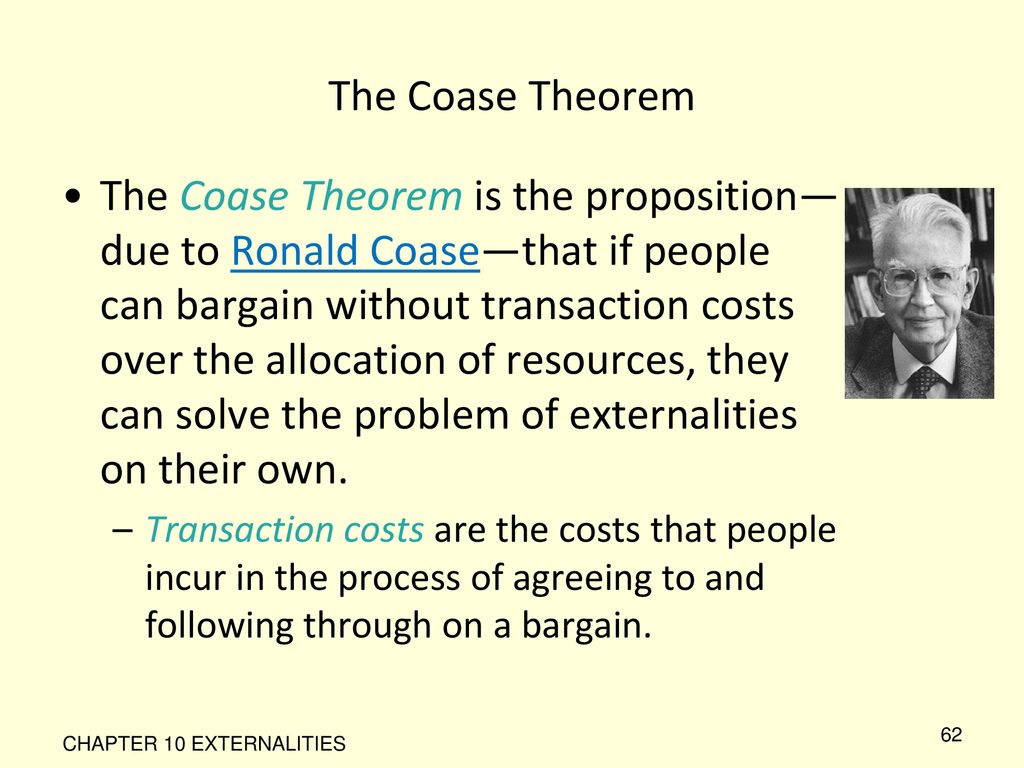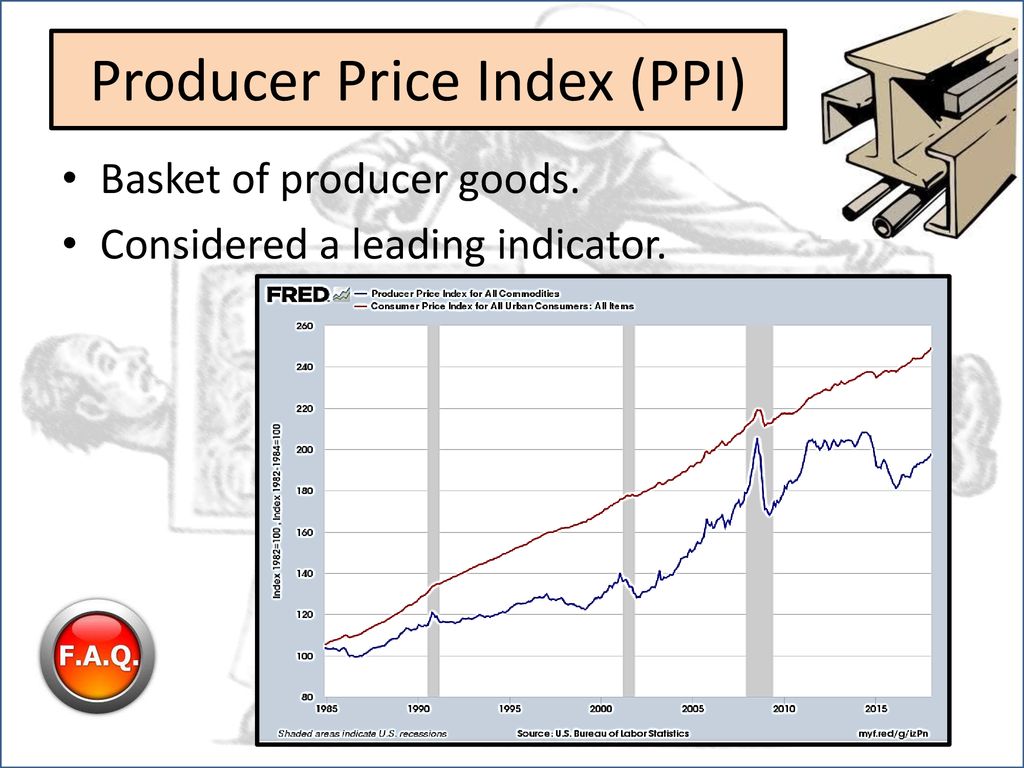
Coase Theorem: Solving Externalities Without Government Intervention
Imagine a world where disputes over pollution, noise, or even the smell of a neighbor’s barbecue could be resolved efficiently, not by burdensome government regulations, but through simple, voluntary agreements between the people involved. Sounds too good to be true? This is the revolutionary insight offered by the Coase Theorem, a cornerstone of economic thought proposed by Nobel laureate Ronald Coase.
For decades, economists believed that only government intervention could correct "externalities"—the unintended side effects of economic activities that impact third parties. But Coase challenged this notion, arguing that under certain conditions, private individuals or groups could negotiate their way to an efficient solution, making government action unnecessary.
This article will delve into the Coase Theorem, explaining what externalities are, how the theorem works, its conditions, its profound implications, and why it doesn’t always apply in the real world. Get ready to rethink how we solve some of society’s most common problems!
What Are Externalities? The Unintended Ripples
Before we dive into the Coase Theorem, let’s make sure we understand the problem it aims to solve: externalities.
An externality occurs when the production or consumption of a good or service impacts a third party who is not directly involved in the transaction. These impacts can be positive or negative.
-
Negative Externalities (Costs to Others): These are costs imposed on third parties.
- Pollution from a factory: The factory produces goods for its customers, but the smoke it emits harms the air quality for nearby residents, who aren’t buying the factory’s products.
- Loud music from a neighbor’s party: The partygoers are enjoying themselves, but the noise disrupts the sleep of a neighbor trying to rest.
- Traffic congestion: More people driving creates more traffic for everyone else, even those not directly involved in the initial decision to drive.
-
Positive Externalities (Benefits to Others): These are benefits conferred on third parties.
- A well-maintained garden: The homeowner enjoys their garden, but neighbors also benefit from the beautiful view and increased property values.
- Vaccinations: When you get vaccinated, you protect yourself, but you also reduce the risk of spreading disease to others in the community (herd immunity).
- Research and Development: A company invests in R&D, creating new knowledge that can benefit society as a whole, even competitors.
Why are externalities a problem? From an economic perspective, they lead to inefficiency. When negative externalities exist, too much of the harmful activity occurs because the producer doesn’t bear the full cost. When positive externalities exist, too little of the beneficial activity occurs because the producer doesn’t capture the full benefit. Traditionally, economists suggested taxes for negative externalities and subsidies for positive ones to "internalize" these costs or benefits.
The Traditional View: Government to the Rescue (Usually)
For a long time, the prevailing economic wisdom, largely influenced by Arthur Pigou, was that externalities were a clear case of market failure. Since the free market wouldn’t naturally account for these external costs or benefits, government intervention was seen as essential to achieve an optimal outcome.
Typical government solutions include:
- Taxes (Pigovian Taxes): Imposing a tax on activities that generate negative externalities (e.g., carbon tax on pollution) to make the polluter pay for the social cost.
- Subsidies: Providing financial incentives for activities that generate positive externalities (e.g., subsidies for education or renewable energy).
- Regulations: Setting limits or rules (e.g., emissions standards for factories, zoning laws to separate residential and industrial areas).
While these approaches can be effective, they often come with their own challenges:
- Information Asymmetry: Governments may struggle to gather enough information to set the "right" tax, subsidy, or regulation.
- Bureaucracy and Inefficiency: Government programs can be slow, costly to administer, and prone to political influence.
- One-Size-Fits-All: Regulations might not be flexible enough to account for diverse local circumstances.
This is where Ronald Coase offered a radically different perspective.
Enter Ronald Coase and His Revolutionary Idea
Ronald Coase (1910-2013) was a British economist who won the Nobel Memorial Prize in Economic Sciences in 1991. His most famous contributions are the Coase Theorem and his work on the nature of the firm.
Coase’s groundbreaking insight, first articulated in his 1960 paper "The Problem of Social Cost," was deceptively simple yet profoundly impactful: If property rights are clearly defined and transaction costs are low enough, private parties can bargain among themselves to reach an efficient solution to an externality problem, regardless of who initially holds the property rights.
Let’s break down this powerful statement.
The Coase Theorem Explained: Bargaining Our Way to Efficiency
The Coase Theorem isn’t about eliminating externalities; it’s about efficiently managing them. It suggests that when certain conditions are met, the affected parties can negotiate and reach an agreement that maximizes overall welfare, without the need for a government to step in and dictate terms.
Here are the key components of the Coase Theorem:
- Well-Defined Property Rights: This is the bedrock of the theorem. It must be clear who owns what, or who has the right to do what. For example, does the factory have the right to pollute, or do the residents have the right to clean air? Without this clarity, there’s no basis for negotiation.
- Low Transaction Costs: This is the crucial practical condition. Transaction costs are the expenses incurred in making an economic exchange. They include:
- Information Costs: Finding out who is affected, what the damage is, etc.
- Negotiation Costs: The time, effort, and resources spent in discussions and bargaining.
- Contracting Costs: Drawing up and enforcing agreements (e.g., legal fees).
- Enforcement Costs: Monitoring and ensuring compliance with the agreement.
The Bargaining Process:
If property rights are clear and transaction costs are low, the parties involved will have an incentive to negotiate.
-
Scenario A: The Polluter has the Right to Pollute.
- The residents suffer from the pollution. They value clean air.
- The residents can offer to pay the factory to reduce its pollution.
- The factory will agree if the payment from the residents is greater than the profit it loses by reducing pollution (e.g., by installing filters or changing production methods).
- The residents will agree to pay up to the point where the cost of payment equals the benefit of cleaner air.
-
Scenario B: The Residents have the Right to Clean Air.
- The factory wants to pollute to reduce its production costs and increase profits.
- The factory can offer to pay the residents for the right to pollute.
- The residents will agree if the payment from the factory is greater than the cost of suffering the pollution.
- The factory will agree to pay up to the point where the cost of payment equals the profit it gains from polluting.
The Key Insight: The Invariance Property
Here’s the most counter-intuitive and powerful part of the Coase Theorem: If transaction costs are zero (or negligible), the efficient outcome will be achieved regardless of who is initially assigned the property rights.
- In both scenarios above, the amount of pollution that occurs will be the same efficient level. Why? Because both parties will negotiate until the marginal benefit of reducing (or allowing) pollution equals the marginal cost.
- What does change is the distribution of wealth. The party that doesn’t hold the initial right will end up paying the other party. So, while the outcome (the level of externality) is efficient, who benefits financially from the resolution depends on who started with the "right."
Classic Examples to Illustrate the Coase Theorem
Let’s look at some simple examples to make this concept concrete.
1. The Farmer and the Rancher (Coase’s Original Example)
Imagine a farmer who grows crops next to a rancher who raises cattle. The cattle sometimes stray onto the farmer’s land and destroy his crops. This is a negative externality.
-
Case 1: The Rancher has the Right to Let His Cattle Roam.
- The farmer is losing crops. He can offer to pay the rancher to build a fence or keep his cattle contained.
- If the cost of the fence (or containment) is less than the value of the damaged crops, the farmer will pay the rancher to build the fence.
- The rancher will accept if the payment covers his costs.
-
Case 2: The Farmer has the Right to Be Free from Damage (Cattle Must Be Contained).
- The rancher is losing money because he has to build a fence or constrain his cattle.
- The rancher can offer to pay the farmer for the right to let his cattle roam, compensating the farmer for crop damage.
- If the cost of the damage is less than the cost of the fence, the rancher will pay the farmer for the right to let his cattle roam.
The Outcome: In both cases, if the value of the crops saved by a fence is greater than the cost of building the fence, a fence will be built (or the cattle will be contained). If the value of the crops saved is less than the cost of the fence, no fence will be built, and the crops will be damaged (with compensation if the farmer has the right). The efficient outcome (fence or no fence) is achieved regardless of who has the initial right; only who pays whom changes.
2. The Doctor and the Noisy Confectioner
A doctor’s office is next to a confectioner who uses noisy machinery, disturbing the doctor’s patients.
-
Case 1: Confectioner has the Right to Make Noise.
- The doctor suffers. He can offer to pay the confectioner to install soundproofing or operate during different hours.
- If the cost of soundproofing is less than the doctor’s lost business, the doctor will pay.
-
Case 2: Doctor has the Right to Quiet.
- The confectioner suffers. He can offer to pay the doctor for the right to make noise, compensating for lost business.
- If the value of making noise is greater than the lost business, the confectioner will pay.
The Outcome: The optimal level of noise (and its mitigation) will be achieved. If the value of quiet to the doctor outweighs the cost to the confectioner of reducing noise, noise will be reduced. If the value of noise to the confectioner is higher, noise will persist (with compensation).
Why Doesn’t This Always Happen? The Role of Transaction Costs
The "low transaction costs" condition is critical. In the real world, transaction costs are rarely zero and often quite high. This is the primary reason why the Coase Theorem doesn’t always apply neatly to every externality problem.
When transaction costs are too high, private bargaining breaks down. It becomes too expensive or impractical for the affected parties to find each other, negotiate, and enforce an agreement.
Consider the pollution example again:
- Many Parties: If a factory pollutes a city, there might be thousands or millions of affected residents. Organizing them to negotiate with the factory is incredibly difficult and costly.
- Free-Rider Problem: In a large group, some individuals might try to benefit from the agreement without contributing to the costs of negotiation or payment (e.g., getting cleaner air without paying their share).
- Information Asymmetry: It’s hard to precisely measure the damage caused by pollution to each individual or to know the factory’s exact costs of reducing pollution.
- Bargaining Power: One party might have significantly more bargaining power, leading to an unfair or inefficient outcome.
- Enforcement Issues: Who ensures that the factory keeps its promises? What if new residents move in?
When transaction costs are high, government intervention might actually be the more efficient solution, even with its own imperfections. It can impose a solution (like a tax or regulation) that is cheaper to implement than letting millions of individuals try to bargain.
Implications and Real-World Applications
Despite its limitations, the Coase Theorem has had a profound impact on economic thought and policy, particularly in areas like:
-
Environmental Policy:
- Cap-and-Trade Systems: These systems (like those for carbon emissions) are Coasian in spirit. They define a property right (the right to emit a certain amount of pollution) and allow firms to buy and sell these rights. Firms that can reduce pollution cheaply sell their allowances to firms for whom it’s more expensive, leading to an efficient overall reduction.
- Pollution Permits: Similar to Cap-and-Trade, these assign a right to pollute up to a certain level, which can then be traded.
-
Spectrum Rights: The allocation of radio frequencies for broadcasting and telecommunications often involves defining property rights and allowing companies to buy and sell access, leading to efficient use of a scarce resource.
-
Nuisance Law: Many legal disputes over noise, odors, or blocked views are resolved through private negotiation or court rulings that effectively define property rights and encourage bargaining. Courts often act as a mechanism to clarify rights when transaction costs prevent private agreement.
-
Homeowners Associations (HOAs) and Private Communities: These are examples of private organizations that define and enforce property rights and rules (e.g., noise limits, aesthetic standards) among members, often resolving potential externalities without external government intervention.
-
Contract Law: The very existence of contracts facilitates private bargaining by reducing transaction costs (by making agreements legally enforceable).
The Coase Theorem shifted the focus from simply identifying market failures to understanding the role of property rights and transaction costs in achieving efficient outcomes. It suggests that economists and policymakers should not automatically jump to government intervention but first consider if clearer property rights and lower transaction costs could enable private solutions.
Limitations and Criticisms of the Coase Theorem
While powerful, the Coase Theorem is not without its critics and limitations:
- High Transaction Costs are the Norm: As discussed, this is the biggest practical hurdle. In many real-world scenarios, particularly with diffuse externalities (like global climate change), transaction costs are prohibitively high.
- Distributional Concerns: Even if an efficient outcome is reached, the initial assignment of property rights significantly impacts who benefits financially. This can lead to fairness issues, as the party initially given the right has a strong bargaining position.
- Information Problems: Parties may not have perfect information about the costs and benefits of reducing or allowing an externality, which can hinder efficient bargaining.
- Holdout Problem: If many parties are involved, one party might try to "hold out" for a larger share of the benefits, potentially derailing the entire agreement.
- Bargaining Power Imbalances: One party might have significantly more power or resources, leading to an outcome that is efficient but unfair or even exploitative.
- Moral and Ethical Considerations: Some argue that certain "rights" (e.g., the right to pollute) should not be marketable or subject to negotiation, regardless of economic efficiency.
Conclusion: A Powerful Lens for Economic Problems
The Coase Theorem is a profound contribution to economics, fundamentally changing how we think about externalities and the role of government. It moved the debate from "market failure requires government intervention" to "clarify property rights and reduce transaction costs to enable private solutions."
While it highlights the potential for private bargaining to solve problems without direct government control, it also implicitly explains why governments often are necessary: to define and enforce property rights, and to step in when transaction costs are too high for private parties to reach efficient agreements on their own.
By understanding the Coase Theorem, we gain a powerful lens through which to analyze a vast array of economic and social problems, encouraging innovative, market-based solutions rather than defaulting to top-down regulation. It teaches us that the allocation of rights matters, and that much can be achieved when individuals are empowered to negotiate their own destinies.




Post Comment